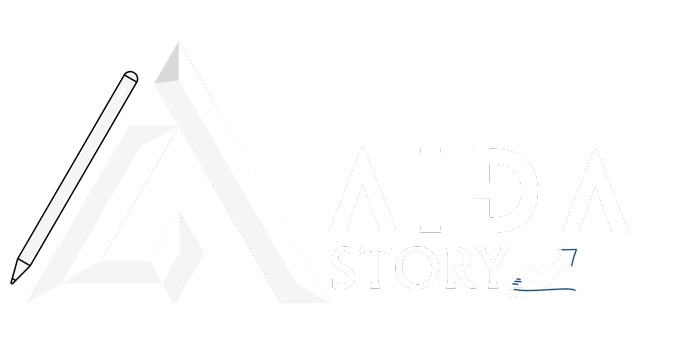Publicity releases are among the most effective ways to present your information to the media and stakeholders. Regarding press releases, formatting can make the difference between success and failure regarding the message getting across.
when the company is issuing one for a new product, a major company achievement, or even company updates that may be of significant interest to the public.
In this blog, we’ll look at the top press release format and provide guidelines on how to write the perfect news release.
Why does the press release format bear such importance?
The format of a press release is important because it dictates how journalists and readers will look at the news you are providing. A practical press release means your statement is understandable, clearly laconic and simple.
The format helps the writers to outline information in such a way that it would capture the [{what}] quickly, help the writers to build their credibility, and prompt the media outlets to publish a story.
Each press release should have a professional look to have a competitive edge over the numerous press releases today.
Once you learn how to write news in this way, you will increase the likelihood of your news getting circulation and build up your brand equity as a credible one.
Press releases also serve as an efficient tool for controlling your public relations more or less strategically to help you get in touch with journalists, bloggers, and other people of interest.
Refer to this writing guide for more information, tips, and guidance on how to write a press release.
Most Important Features of the Proper Press Release Writing
An ideal press release format typically includes the following elements:
Headline: A proper and informative title that encapsulates your announcement.
Subhead: Literal translation of ‘meta description’ – a concise line of text that gives information to accompany a headline.
Dateline: The date of release and the place of release.
Lead Paragraph: The questions about who, what, where, when, why, or how of your story.
Body Paragraphs: Chapter information, tables, figures, graphs, and calculations to support the presented quotations and quotes.
Boilerplate: One or two paragraphs about your company.
Contact Information: Information about how the journalists can contact you.
For example, if you’ve decided to launch a new product, then your headline might look like this: “[Your Company Name] announces the release of a revolutionary product within [your industry challenge].”
The subhead can expand, such as: “A New Technology Finds Ways to Increase Profit, Cut Losses Globally for all Businesses.”
These five elements should harmonize and be integrated into the narrative, functioning as a single text. Regardless of the small portion, each element should complement the others and have a coherent and integral storyline.
To see the breakdown of the press release, refer to the Ohio State guide on press release structure.
Why the Headline and the First Paragraph Matter
Such a headline includes the first information a reader pays attention to when pursuing an article. Summarize it, sell it, and educate the intended audience in a nutshell.
For instance, “AI Developers Unveil New Application to Transform Telecommuting” sounds far more interesting than “New Product from Firm.” It means avoiding passive constructions and tone and using as many action words as possible.
The lead paragraph is equally important as well. This is where you focus on the key points of your plan, which are the main of your plan’s narrative.
Structure the news in a manner typical of journalism—the lead is the most important information of the story and the subsequent details.
Of course, the lead paragraph must respond to the “Five Ws” (Who, What, Where, When, Why) and lay out the information architecture for the rest of the release.
How to structure a winning press release.
After the headline and lead paragraph, the subsequent sections of the press release expand on the details:
Body Paragraphs: These will enable you to provide background information, quotations from the major individuals involved in the process, and relevant statistics or facts.
Boilerplate: Credibility and the background you want to share with the reader are introduced in this brief paragraph about your company.
Call to Action (CTA): Remind the readers or the journalists to follow through, such as visiting your website or contacting your media person.
For instance, [Your Company CEO] said, ‘This new initiative is in tune with our mission, which is to provide technology for everyone.’ This particular quote can be incorporated into the body to bring some humanity into the piece.
The HubSpot’s press release templates contain additional templates and real examples for your inspiration.
Ways to Make Your Press Release Effective
Keep it concise: Ideally, no more than one page or about 400-500 words.
Use professional language: Do not use any specialized business terminology or technical language where it is not necessary.
Include multimedia: Include pictures or links related to the topic to encourage interaction.
Optimize for SEO: Include the keywords in press and news release format for better visibility.
Proofread: Make sure your press release is free from mistakes and looks professional.
Avoid Overloading Information: Avoid going too much into detail; you have crowded the reader out of his or her desired focus.
Graphics or links to images and videos can greatly increase interest in any press release. For example, if you are announcing a new product, you need to share a picture that depicts the product in use or a video that shows the utility of the product.
Common Mistakes to Avoid
- While crafting a press release, avoid these pitfalls:
- The mistake of overburdening it with Harward.
- Hiding the important information behind unnecessary words.
- One is likely to leave out contact details from the presentation.
- Passing off a sales pitch instead of a news story.
The primary mistake one can make when using it is not trying to align it with your audience.
One of the common mistakes that people make is to lack a dateline. The dateline also affords information concerning when and where the news is significant, so your proclamation will seem state-side.
Press Release Distribution
Having composed the flawless press release, you proceed to its distribution. Use websites like PR Newswire and Business Wire or contact reporters and bloggers directly. Wishing your release via social networks is also possible, increasing its visibility.
Ensure it fits the audience, the sector you belong to, or the clients you serve.
A notification system such as Google Alerts can be used to monitor the frequency of media references and the impacts of press releases.
The Importance of Measuring Success
Whenever you issue your press release, it is wise to monitor its effectiveness. Use tools like Google Analytics, media monitoring platforms, and social media metrics to track:
Reach: What is the circulation of the press release, and how many folks read or acted on it?
Pickups: There is no question how many media outlets or blogs have published the release in this case.
Traffic: Did the release generate traffic to the website or sales?
Engagement: The engagement rate is observed, such as likes, shares, and comments on different social networks.
Such statistics help to determine your successes and perfect your press release approach when making future announcements.
How Press Releases Have Evolved
This is especially key given today’s primarily digital audience rather than a press release limiting it to newspaper publication.
The reports we now read are heightened with keywording, hashtagging, and hyperlinking to build traffic.
Another important aspect of the writing style in modern press releases has been shifted to visual storytelling: infographics, charts, and videos are nowadays indisputable parts of many press releases.
Furthermore, with the help of press releases, companies are improving the process of content marketing.
They produce stunning, shareable and interesting releases through the format, educate the media, and build brand awareness online. For inspiration, read the content published at AidaStory.
Final Thoughts
These documents stay relevant in public relations as they link your organization and the media.
Following the guidelines discussed in the article and avoiding mistakes in the press release format can improve your brand’s reputation and successfully transmit your message to the targeted audience.
Apply the information in this guide about the proper structure of press releases, their format, and SEO optimization, and you’ll be able to create effective releases.
FAqs
1. How many words is it best to write for a press release?
The ideal press release length of content is 400 words up to a maximum of 500 words—long enough to remain informative yet short enough to remain engaging and interesting to the reader.
2. What can I do if I want my press release to look different?
Choose a powerful headline popular in quotes, related clips, photographs, and plain language calling for action.
3. Does the keyword go in the press release?
Including those keywords allows your press release to be located online using search engine optimization tools.
4. How frequently do I have to release my press releases?
Make an issue of press releases whenever you have something to announce concerning your products, activities or achievements.
5. Is posting the press release to social media platforms permissible?
Absolutely! LinkedIn, Twitter and Facebook can be used to spread your press release even further.



